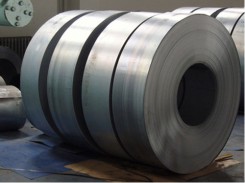歡迎訪問山東振遠(yuǎn)合金科技有限公司網(wǎng)站

本公司是一家集不銹鋼銷售、加工、配送、服務(wù)為一體的綜合性企業(yè)
主要經(jīng)營各種材質(zhì)、規(guī)格的不銹鋼管、不銹鋼板、棒、角鋼、圓鋼及配件等

本公司是一家集不銹鋼銷售、加工、配送、服務(wù)為一體的綜合性企業(yè)
主要經(jīng)營各種材質(zhì)、規(guī)格的不銹鋼管、不銹鋼板、棒、角鋼、圓鋼及配件等


產(chǎn)品展示

不銹鋼型材
不銹鋼型材,就是不銹鋼棒通過熱熔、擠壓、從而得到不同截面形狀的不銹鋼材料。不銹鋼型材的生產(chǎn)流程主要包括熔鑄、擠壓和上色三個(gè)過程。其中,上色主要包括:氧化、電泳涂裝、氟炭噴涂、...

不銹鋼板
不銹鋼板一般是不銹鋼板和耐酸鋼板的總稱,具有與不穩(wěn)定的鎳鉻合金304相似的抵擋一般腐...

不銹鋼管
不銹鋼管是一種經(jīng)濟(jì)的斷面鋼材,是鋼鐵工業(yè)中的一項(xiàng)重要產(chǎn)品,可廣泛用于生活裝飾和工業(yè),市面上很多人用于制作 樓梯扶手、護(hù)窗、欄桿、家具等。常見的有 201 和304 兩種材質(zhì)。...

不銹鋼焊管
304不銹鋼焊管生產(chǎn)工藝簡單,生產(chǎn)效率高,品種規(guī)格多,設(shè)備資金少,但一...

不銹鋼扁鋼
不銹鋼扁鋼可按結(jié)構(gòu)的不同需要組成各種不同的受力構(gòu)件,也可作構(gòu)件之間的連接件。廣泛地用于各種建筑結(jié)構(gòu)和工程結(jié)構(gòu),如房梁、橋梁、輸電塔、起重運(yùn)輸機(jī)械、船舶、工業(yè)爐、...

不銹鋼帶鋼
不銹鋼帶鋼厚度較薄、寬度較窄、長度很長的鋼板。其寬度一般在20mm—200 mm。成卷供應(yīng),其規(guī)格以...

不銹鋼加工
不銹鋼加工工藝是指憑著不銹鋼的性能對不銹鋼進(jìn)行剪、折、彎、焊等機(jī)械加工...

哈氏合金
哈氏合金是一種鎳基耐腐蝕合金,主要分成鎳-鉻合金與鎳鉻鉬合金兩大類。哈氏合金具有良好...
公司簡介
山東振遠(yuǎn)合金科技有限公司
Shandong Zhenyuan Alloy Technology Co., Ltd.山東振遠(yuǎn)合金科技有限公司主要業(yè)務(wù)覆蓋淄博不銹鋼,淄博不銹鋼管,淄博不銹鋼板等范圍,價(jià)格,規(guī)格全。本公司座落于中國有名的不銹鋼產(chǎn)業(yè)基地—中國北方不銹鋼市場,本公司是一家集不銹鋼產(chǎn)品銷售、加工、配送、服務(wù)為一體的綜合性企業(yè),,公司有剪板、卷板、切割、車床、鉆床、不銹鋼磨砂拉絲等各種機(jī)械加工設(shè)備,可為客戶制作各種規(guī)格的型材及不銹鋼配件、非標(biāo)準(zhǔn)件及各種容器具等,質(zhì)優(yōu)價(jià)廉、交貨及時(shí)。產(chǎn)品被廣泛用于化工、紡織、石油、電力、天然氣、核電站、航天航空、食品機(jī)械、環(huán)保設(shè)備、供水、鍋爐、熱交換器、等諸多行業(yè),深受廣大客戶歡迎。
查看更多新聞中心

不銹鋼(Stainless Steel)是不銹耐酸鋼的簡稱,是可以耐空氣、蒸汽、水等弱腐蝕介質(zhì)或具有不銹性的鋼種,按組織狀態(tài)分為:馬氏體鋼、鐵素體鋼、奧氏體鋼、奧氏體-鐵素體(雙相)及沉淀硬化不銹鋼等。另外,可按成分分為:鉻不銹鋼、鉻鎳不銹鋼和鉻錳氮不銹鋼等。
核心優(yōu)勢


地址:山東省淄博市周村區(qū)
周隆路2908號北方不銹鋼市場6-16號